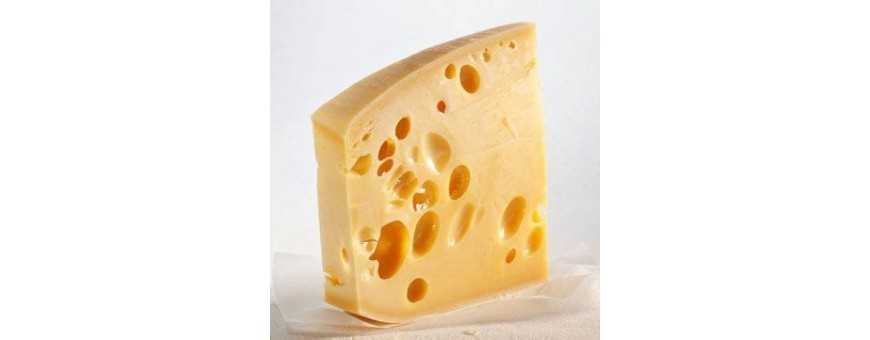Sorry for the inconvenience.
Search again what you are looking for
SOXLANA offers you everything you need. Be satisfied first and then pay later.

Gruyère requires between 5 and 18 months of ripening, it is a hard cheese made from raw milk. History and characteristics of Gruyère. Switzerland is the birthplace of Gruyère. This one would be made there since Antiquity. But the term Gruyère only dates back to the 17th century. It was in the 18th century that Gruyère was exported to France.
Pressed cheese cooked with raw cow's milk, produced in France and / or Switzerland. For a long time, the Swiss and the French fought for the right to give the name “Gruyère” to cheeses that had nothing in common, except being cooked hard paste.
The famous hard cheese has been made for centuries around the small town of Gruyères and produced in village cheese dairies in western Switzerland according to the traditional recipe. 400 liters of milk for a wheel It takes almost 400 liters of raw milk to make a 35 kg wheel.
What are its benefits ?
Dairy products are the best source of calcium in our diet. Their calcium is considered the "benchmark" calcium: it is particularly well absorbed and assimilated by the body. This bioavailability is enhanced by the presence of proteins, lactose, vitamin D and phosphorus.
Calcium is necessary for the mineralization of bones and teeth throughout life. It is also involved in many vital processes: muscle contraction, blood coagulation, blood pressure, transmission of nerve impulses, hormonal functions, enzymatic activity, cell renewal.
Eating foods rich in calcium helps prevent osteoporosis.
Cheeses are also an excellent source of phosphorus, which is also essential for the mineralization of bones and teeth, as well as for tissue regeneration.
They provide a high quality protein supply, especially for vegetarians: the biological value of cheese proteins is comparable to that of meat proteins.
Due to its high calcium and protein density, Gruyere is particularly useful for enriching the diet of people with undernutrition. It can easily be integrated into purees, soups, gratins.
If excessive consumption of saturated fatty acids promotes an increase in "bad" cholesterol in the blood (LDL), they nevertheless play a real role in health. They help build cell membranes and allow the body to use fat-soluble vitamins - A, D, E and K -.
The difference between Emmental and Gruyère
Gruyère France, meanwhile, has small holes varying from the size of a pea to that of a cherry. It is an IGP * cheese. The Gruyère wheel is much smaller than that of Emmental, since it weighs on average around forty kilos. Its texture is smoother and its taste more pronounced.
Sharing similarities in their manufacturing process, Gruyère is often confused with Emmental. Yet these are two different cheeses and not just the eye. To know which cheese to melt or gratinate, decryption.
The common points of Gruyère and Emmental
Emmental and Gruyère made from cow's milk both belong to the same cheese family. That of cooked pressed cheeses, that is to say cheeses whose milk, during their manufacture, is heated before being molded and pressed. In addition, Emmental and Gruyère share the Swiss origin of their name. Indeed, the Emmental would take its name from the Emme river in the canton of Bern and the Gruyère from the town of Gruyères in the canton of Friborg.
Gruyère is a cheese without a hole
Switzerland and France have been arguing since the 12th century over the historical origin of this large cheese (at the time the borders were not) which was also a cheese for keeping. In fact, pressing the dough after cooking allowed it to extract as much moisture as possible and see it improve over time.
In Switzerland, Gruyère, renowned for its more pronounced taste and its melting or even crumbly texture, is produced from raw cow's milk. If grated cheese is commonly called Gruyère, it is often actually Emmental! With its fruity notes and hazelnut aromas, Swiss Gruyère has benefited from a PDO since 2013 and does not contain holes.
Even if in the great family of Gruyères, there is the French Gruyère which is also a cooked pressed cow's milk cheese which has slight holes varying from the size of a pea to that of a cherry inside. of its crust.
Search again what you are looking for
This website uses cookies. By continuing to browse the site, you accept our use of cookies. En savoir plus ici.
